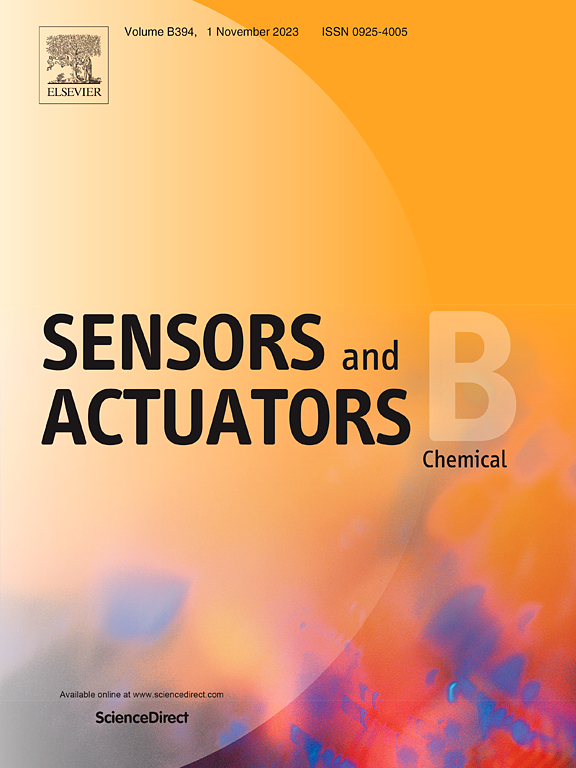简单的网络增强量子线为基础的光纤探头在室温下的高灵敏度NH3气体检测
IF 3.7
1区 化学
Q1 CHEMISTRY, ANALYTICAL
引用次数: 0
摘要
在室温下,特别是在复杂条件下,多通道有毒氨(NH3)气体的检测一直是一个重大挑战。本文在125µm通信光纤上构建了一种等离子体pt掺杂SnO2增强量子线NH3气体传感器。为了提高在受限区域的可用性,该传感器采用了紧凑的插入式光纤探头设计。等离子体pt掺杂SnO2增强量子线涂层增强了NH3气体分子与吸附在量子线表面的氧之间的相互作用,从而调制了等离子体光信号。我们提出并比较了两种光调制方法-波长和强度-我们的NH3气体探针。我们的传感器在室温下实现了令人印象深刻的强度灵敏度-10.45 a.u./ppm,快速响应时间为3.8 s。此外,强度调制提供了287 ppb的极低检测限,对温度和湿度变化的敏感性最小。所提出的光纤NH3气体探针具有良好的特异性,可重复性,稳定性和成本效益,以及光源和接收器选择的灵活性,使其成为NH3气体检测应用的理想选择。本文章由计算机程序翻译,如有差异,请以英文原文为准。
Easy networking enhanced quantum wires-based fiber probe for highly sensitive NH3 gas detection at room temperature
The detection of toxic ammonia (NH3) gas across multiple channels at room temperature, especially under complex conditions, consistently presents a significant challenge. In this paper, a plasmonic Pt-doped SnO2 enhanced quantum wires NH3 gas sensor is constructed on a 125-µm communication fiber with easy networking. To enhance usability in confined areas, the sensor features a compact plug-in fiber probe design. The plasmonic Pt-doped SnO2 enhanced quantum wires coating boosts the interaction between NH3 gas molecules and oxygen adsorbed on the wires' surface, modulating the plasmonic optic signal. We present and compare two optical modulation methods-wavelength and intensity-for our NH3 gas probe. Our sensor achieves an impressive intensity sensitivity of −10.45 a.u./ppm at room temperature with a rapid response time of 3.8 s. Furthermore, intensity modulation offers an exceptionally low detection limit of 287 ppb, with minimal susceptibility to temperature and humidity variations. The proposed fiber NH3 gas probe exhibits commendable specificity, repeatability, stability, and cost-effectiveness, along with flexibility in light source and receiver choices, making it ideal for NH3 gas detection applications.
求助全文
通过发布文献求助,成功后即可免费获取论文全文。
去求助
来源期刊

Sensors and Actuators B: Chemical
工程技术-电化学
CiteScore
14.60
自引率
11.90%
发文量
1776
审稿时长
3.2 months
期刊介绍:
Sensors & Actuators, B: Chemical is an international journal focused on the research and development of chemical transducers. It covers chemical sensors and biosensors, chemical actuators, and analytical microsystems. The journal is interdisciplinary, aiming to publish original works showcasing substantial advancements beyond the current state of the art in these fields, with practical applicability to solving meaningful analytical problems. Review articles are accepted by invitation from an Editor of the journal.
 求助内容:
求助内容: 应助结果提醒方式:
应助结果提醒方式:


